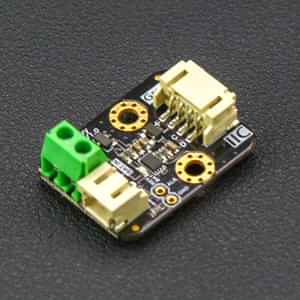Analog Devices MAX17043 battery fuel gauge
The MAX17043 platform allows you to use a MAX17043 to more accurately monitor the remaining capacity of a LIPO battery (datasheet, DFRobot) in ESPHome. It uses the I²C Bus for communication (the address is fixed at 0x36).
Once configured, it uses a sophisticated Li+ battery-modeling scheme, called ModelGauge™ to track the battery’s relative state-of-charge continuously over a widely varying charge/discharge profile. Unlike traditional fuel gauges, the ModelGauge algorithm eliminates the need for battery relearn cycles and an external current-sense resistor.
In low power applications, it’s very important to report battery levels accurately. By utilising ESPHome’s deep_sleep
component together with a MAX17043, projects can run for extended periods and the user can be confident of the amount of battery remaining.
This overcomes the reality that measured battery voltage does not correlate well at all with remaining battery charge.
ℹ️ Note
See hardware design discussion below - it’s important to leave the MAX17043 powered on during deep sleep.

Configuration
# Example configuration entry
sensor:
- platform: max17043
id: max17043_id
i2c_id: i2c_max17043
battery_voltage:
name: "Battery Voltage"
battery_level:
name: "Battery"Sensors
battery_voltage (Optional, float): The voltage measured at the LIPO battery.
- All other options from Sensor.
battery_level (Optional, float): The percentage of battery remaining using the ModelGauge™ battery-modelling scheme.
- All other options from Sensor.
Hardware design considerations
It’s important to realise that the relationship between battery voltage and remaining battery level is poorly correlated as well as being non-linear.
The MAX17043 works by continually monitoring charge and discharge to assess how much battery capacity remains. When first powered on, it makes an assumption that the measured voltage has been in a relaxed state for 30 minutes. This best first guess does not have a lasting impact because it monitors relative state-of-charge over time.
Deep sleep cycles are most often designed so the device wakes up for short periods to do its business and then sleeps for a much longer period. It’s critical to allow the MAX17043 to maintain state during the sleep phase.
If power is removed from the MAX17043 then each time the ESP comes out of deep sleep the MAX17043 will have to start again from a new best guess. It will not be able to use past charge and discharge behaviour to work its magic - significantly diminishing the point of using a MAX17043.
Current consumption during device sleep mode is extremely low (maximum of 3µA compared to up to 75µA maximum when active).
The driver enables the user to put the device to sleep just before deep sleep commences using the sleep_mode action.
When the ESP comes out of deep sleep the driver clears the MAX17043 sleep bit.
For example:
on_...:
then:
- max17043.sleep_mode: max17043_id
- deep_sleep.enter:
id: deep_sleep_1
sleep_duration: 20minℹ️ Note
Once you have called the
sleep_mode()action, the MAX17043 will stop recalculating the voltage and battery level. Hence, if you leave the ESP running it will continue to publish the sensor values with the last measurements. The only way to come out of sleep mode is to restart the device (either as intended via deep sleep wake; or less ideally with a power cycle).So, only call
sleep_mode()when you intend to send the ESP into deep sleep.

